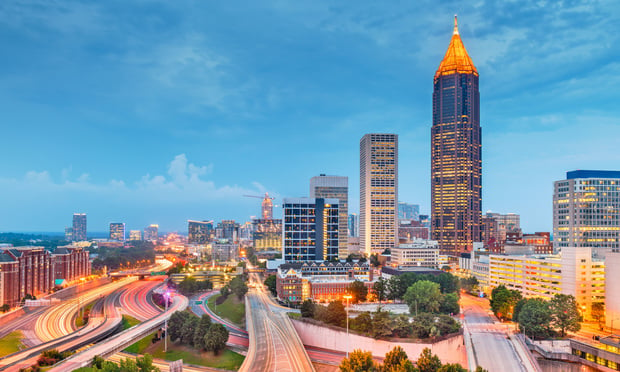ONTARIO, CA—The path from Asian exporting companies to the L.A./Long Beach ports and their proximity to the Inland Empire create the ideal environment for industrial to thrive here, said speakers at RealShare Inland Empire here last week. In many ways, this route is the most expedient way to transport goods from Asia to the US for distribution, the “Industrial Driving Demand” panelists said.
However, there are also challenges. Brandon Birtcher, CEO of Goodman Birtcher, in speaking for Jon DeCesare, who was absent from the conference but had prepared a presentation, observed that “there's an enormous stack-up of ships in L.A. and Long Beach. We're back to the old games of politics between port and management.” He also spoke of a chassis ownership shift to resolve a shortage, and in addition, Immigration laws have created a shortage of drivers, both conditions will impact the Inland Empire. Further, Birtcher stated “because of the carriers efforts to save fuel by initiating a “slow steaming practice” a container departing Shanghai with a destination of NYC can arrive 11 days faster if dropped in the Port of LA/LB using rail vs via the Panama Canal.”
Birtcher also referenced DeCesare's research indicating that while we used to have approximately 15,000 trucks available, today there are approximately 8,000 which has put pricing pressures on transporters delivering containers to the Inland Empire. This along with other factors are influencing developers to modify building design.”
Moving product is the purpose of industrial real estate, said moderator David Wensley, a partner with Cox Castle & Nicholson. “There is a demand for distribution to be here.”
Differences in industrial product among the different Southern California markets were also discussed. Jonathan Pharris, co-founder and director of acquisitions for CapRock Partners, said L.A. has more older product with less cubic footage, and Orange County is a hybrid market. “There's no point for major distribution in Orange County, and as you move farther south, the buildings get smaller—that's the type of user there, very entrepreneurial.”
Pharris added there's nothing available in the 100,000-to-200,000-square-foot size range in Orange County, but “in the Inland Empire, we like the 210 corridor—we own a lot of land in the Rialto corridor.”
Stephen Batcheller, a partner with Panattoni Development Co. Inc., said both L.A. and Orange County are feeder markets to the Inland Empire. “It's the only area that has any land and it's the only place Southern California can grow.” He added that lease rates in infill areas are 65 cents per square foot; farther east, they run 45 cents per square foot for industrial.
Birtcher said the port-driven strategy is the food chain to the consumer. His firm is “investing heavily in Southern California,” but the zoning and entitlement process has become increasingly more difficult here. Batcheller agreed. “Finding land and getting entitlements in key markets is what we are concerned about.”
Birtcher also said, “We are going to see an increasing push to bring distribution centers closer to population centers because of fuel costs,” which won't remain low for long.
All of the panelists agreed that large e-commerce companies have changed industrial design, possibly permanently. “We're trying to figure out how to get those designs into our spec buildings,” said Batcheller. “Security is a key issue—users want one entrance/exit. Clearance height needs to go up, and a lot more cars are in these larger centers so you need more parking to accommodate employee volume. A lot of the changes are being driven by our build-to-suit clients.”
Batcheller also said land prices are going up and will probably continue to do so. In Orange County, developers can expect to pay $30 or more per square foot for industrial land, and as the Inland Empire has become more popular, land prices have risen here, too. “We are looking to go back into smaller spaces here, which our competitors are not doing.”
Economy of scale also comes into play here. Pharris said his firm has to do at least 200,000-square-foot buildings for it to pencil, but it's hard to find that size. In addition, he said it's roughly a two-year cycle from deciding on a site to completing a build, so his firm has to plan out that far.
© 2025 ALM Global, LLC, All Rights Reserved. Request academic re-use from www.copyright.com. All other uses, submit a request to [email protected]. For more information visit Asset & Logo Licensing.







